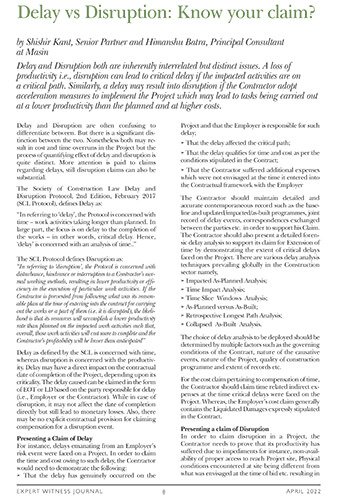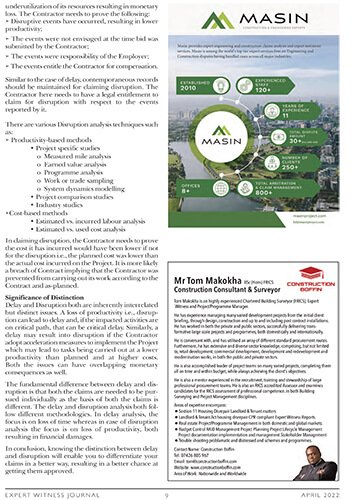

Presenting a Claim of Delay
For instance, delays emanating from an Employer’s risk event were faced on a Project. In order to claim the time and cost owing to such delay, the Contractor would need to demonstrate the following:
- That the delay has genuinely occurred on the Project and that the Employer is responsible for such delay;
- That the delay affected the critical path
- That the delay qualifies for time and cost as per the conditions stipulated in the Contract
- That the Contractor suffered additional expenses which were not envisaged at the time it entered into the Contractual framework with the Employer
Frequently Asked Questions
Get answers to frequently asked questions about everything we do.
What is the main focus of this eBook?
The eBook explores the crucial distinction between delay and disruption in construction projects—two often confused but fundamentally different claims. It helps professionals understand their nature, causes, claim requirements, and quantification methods.
Why is distinguishing between delay and disruption important?
Because they follow different legal and analytical paths. Delay is about time lost (affecting project timelines), while disruption deals with productivity loss (impacting efficiency and cost). Treating them as the same can weaken claim validity.
Who is this eBook intended for?
This publication is valuable for:
- Contractors & Project Managers
- Construction Lawyers
- Claims Consultants & Planners
- Quantity Surveyors
- Dispute Resolution Professionals
What practical insights does it offer?
The eBook outlines:
- How to present delay and disruption claims
- Documentation and analysis techniques (e.g., Time Impact Analysis, Measured Mile Analysis)
- Legal entitlement considerations
- Common causes and real-world project scenarios
Does the eBook provide guidance on how to substantiate claims?
Yes, it emphasizes the importance of contemporaneous records, forensic delay and disruption analyses, and contract interpretation. It also explains specific methods to prove the extent of delay or productivity loss and links them to financial damages.
